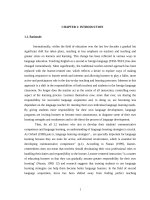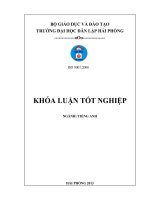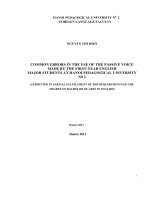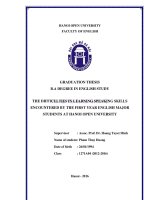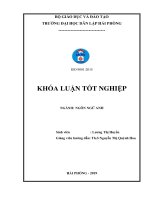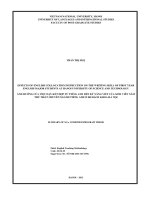Applying scaffolding to teach reading skills for the first year English major students in Hanoi metropolitan university
Bạn đang xem bản rút gọn của tài liệu. Xem và tải ngay bản đầy đủ của tài liệu tại đây (400.13 KB, 8 trang )
���������������������������������������������������������������������������������������������������������������������������������������������������������������������������������������������������������������������������������������������������������������������������������������������������������������������������������������������������������������������������������������������������������������������������������������������������������������������������������������������������������������������������������������������������������������������������������������������������������������������������������������������������������������������������������������������������������������������������������������������������������������������������������������������������������������������������������������������������������������������������������������������������������������������������������������������������������������������������������������������������������������������������������������������������������������������������������������������������������������������������������������������������������������������������������������������������������������������������������������������������������������������������������������������������������������������������������������������������������������������������������������������������������������������������������������������������������������������������������������������������������������������������������������������������������������������������������������������������������������������������������������������������������������������������������������������������������������������������������������������������������������������������������������������������������������������������������������������������������������������������������������������������������������������������������������������������������������������������������������������������������������������������������������������������������������������������������������������������������������������������������������������������������������������������������������������������������������������������������������������������������������������������������������������������������������������������������������������������������������������������������������������������������������������������������������������������������������������������������������������������������������������������������������������������������������������������������������������������������������������������������������������������������������������������������������������������������������������������������������������������������������������������������������������������������������������������������������������������������������������������������������������������������������������������������������������������������������������������������������������������������������������������������������������������������������������������������������������������������������������������������������������������������������������������������������������������������������������������������������������������������������������������������������������������������������������������������������������������������������������������������������������������������������������������������������������������������������������������������������������������������������������������������������������������������������������������������������������������������������������������������������������������������������������������������������������������������������������������������������������������������������������������������������������������������������������������������������������������������������������������������������������������������������������������������������������������������������������������������������������������������������������������������������������������������������������������������������������������������������������������������������������������������������������������������������������������������������������������������������������������������������������������������������������������������������������������������������������������������������������������������������������������������������������������������������������������������������������������������������������������������������������������������������������������������������������������������������������������������������������������������������������������������������������������������������������������������������������������������������������������������������������������������������������������������������������������������������������������������������������������������������������������������������������������������������������������������������������������������������������������������������������������������������������������������������������������������������������������������������������������������������������������������������������������������������������������������������������������������������������������������������������������������������������������������������������������������������������������������������������������������������������������������������������������������������������������������������������������������������������������������������������������������������������������������������������������������������������������������������������������������������������������������������������������������������������������������������������������������������������������������������������������������������������������������������������������������������������������������������������������������������������������������������������������������������������������������������������������������������������������������������������������������������������������������������������������������������������������������������������������������������������������������������������������������������������������������������������������������������������������������������������������������������������������������������������������������������������������������������������������������������������������������������������������������������������������������������������������������������������������������������������������������������������������������������������������������������������������������������������������������������������������������������������������������������������������������������������������������������������������������������������������������������������������������������������������������������������������������������������������������������������������������������������������������������������������������������������������������������������������������������������������������������������������������������������������������������������������������������������������������������������������������������������������������������������������������������������������������������������������������������������������������������������������������������������������������������������������������������������������������������������������������������������������������������������������������������������������������������������������������������������������������������������������������������������������������������������������������������������������������������������������������������������������������������������������������������������������������������������������������������������������������������������������������������������������������������������������������������������������������������������������������������������������������������������������������������������������������������������������������������������������������������������������������������������������������������������������������������������������������������������������������������������������������������������������������������������������������������������������������������������������������������������������������������������������������������������������������������������������������������������������������������������������������������������������������������������������������������������������������������������������������������������������������������������������������������������������������������������������������������������������������������������������������������������������������������������������������������������������������������������������������������������������������������������������������������������������������������������������������������������������������������������������������������������������������������������������������������������������������������������������������������������������������������������������������������������������������������������������������������������������������������������������������������������������������������������������������������������������������������������������������������������������������������������������������������������������������������������������������������������������������������������������������������������������������������������������������������������������������������������������������������������������������������������������������������������������������������������������������������������������������������������������������������������������������������������������������������������������������������������������������������������������������������������������������������������������������������������������������������������������������������������������������������������������������������������������������������������������������������������������������������������������������������������������������������������������������������������������������������������������������������������������������������������������������������������������������������������������������������������������������������������������������������������������������������������������������������������������������������������������������������������������������������������������������������������������������������������������������������������������������������������������������������������������������������������������������������������������������������������������������������������������������������������������������������������������������������������������������������������������������������������������������������������������������������������������������������������������������������������������������������������������������������������������������������������������������������������������������������������������������������������������������������������������������������������������������������������������������������������������������������������������������������������������������������������������������������������������������������������������������������������������������������������������������������������������������������������������������������������������������������������������������������������������������������������������������������������������������������������������������������������������������������������������������������������������������������������������������������������������������������������������������������������������������������������������������������������������������������������������������������������������������������������������������������������������������������������������������������������������������������������������������������������������������������������������������������������������������������������������������������������������������������������������������������������������������������������������������������������������������������������������������������������������������������������������������������������������������������������������������������������������������������������������������������������������������������������������������������������������������������������������������������������������������������������������������������������������������������������������������������������������������������������������������������������������������������������������������������������������������������������������������������������������������������������������������������������������������������������������������������������������������������������������������������������������������������������������������������������������������������������������������������������������������������������������������������������������������������������������������������������������������������������������������������������������������������������������������������������������������������������������������������������������������������������������������������������������������������������������������������������������������������������������������������������������������������������������������������������������������������������������������������������������������������������������������������������������������������������������������������������������������������������������������������������������������������������������������������������������������������������������������������������������������������������������������������������������������������������������������������������������������������������������������������������������������������������������������������������������������������������������������������������������������������������������������������������������������������������������������������������������������������������������������������������������������������������������������������������������������������������������������������������������������������������������������������������������������������������������������������������������������������������������������������������������������������������������������������������������������������������������������������������������������������������������������������������������������������������������������������������������������������������������������������������������������������������������������������������������������������������������������������������������������������������������������������������������������������������������������������������������������������������������������������������������������������������������������������������������������������������������������������������������������������������������������������������������������������������������������������������������������������������������������������������������������������������������������������������������������������������������������������������������������������������������������������������������������������������������������������������������������������������������������������������������������������������������������������������������������������������������������������������������������������������������������������������������������������������������������������������������������������������������������������������������������������������������������������������������������������������������������������������������������������������������������������������������������������������������������������������������������������������������������������������������������������������������������������������������������������������������������������������������������������������������������������������������������������������������������������������������������������������������������������������������������������������������������������������������������������������������������������������������������������������������������������������������������������������������������������������������������������������������������������������������������������������������������������������������������������������������������������������������������������������������������������������������������������������������������������������������������������������������������������������������������������������������������������������������������������������������������������������������������������������������������������������������������������������������������������������������������������������������������������������������������������������������������������������������������������������������������������������������������������������������������������������������������������������������������������������������������������� group, the other
class (N.32) as the experimental group. Secondly, a limited duration for implementing the
proposed activities, it lasted six weeks in the first term of the school year 2020-2021.
3.2. Suggestions
For the teachers, in teaching English reading lessons, they can conduct scaffolding
reading experience and other strategies in teaching reading comprehension. They should be
friendly, devoted and be a good motivator for the students. Teachers should also adjust their
teaching methods, use a variety of strategies in accordance with students’ English level in
order to help them improve their reading comprehension. For the students, they should
motivate themselves, improve their reading comprehension more intensively, and enrich
their vocabulary through reading a lot of books. They are encouraged to read materials as
much as possible, or read for fun.
REFERENCES
1. Abu-Hadid, A. (2000), The effectiveness of cognitive and metacognitive strategies on developing
secondary school students‟ receptive skills, Unpublished Ph.D. Dissertation, Women‟s College,
Ain Shams University.
2. Anderson, N. J. (1999), Explore Second Language Reading: Issues and Strategies, Heinle &
Heinle Publishers, p.1.
3. Billett, S. (1993), Learning is working when working is learning – A Guide to learning in the
workplace, Australia: National Library Australia.
4. Chang, K., Chen, I. & Sung, Y. (2002), “The effect of concept mapping to enhance text
comprehension and summarization”, The Journal of Experimental Education, 71 (1), pp5-23.
5. Clark, K., & Graves, M. (2004), “Scaffolding students’ comprehension of text”, International
Reading Association, 58(6), 570-580.
6. Clark, K. F., & Graves, M. F. (2005), “Scaffolding Students’ comprehension of text: classroom
teachers looking to improve students’ comprehension should consider three general types of
scaffolding”, The Reading Teacher, 58 (6), 570-46, DOI: />7. Duffy, G.G. (2002), “The case for direct explanation of strategies”, In C. C. Block, & M. Pressley
(Eds.), Comprehension Instruction: Research-based best practices, New York: Guilford, pp. 28-41.
8. Many, J. E.(2002), Taylor, D. L., Wang, Y., Sachs, G. T., & Schreiber, H. (2007), “An
examination of pre-service literacy teachers’ initial attempts to provide instructional scaffolding”,
Reading Horizons, 48(1), pp.19-40.
9. Nunan, D. (1992), Research methods in language learning, Cambridge: Cambridge University Press.
10. Ibrahim, H. (2004), The effectiveness of a suggested program for developing Egyptian EFL
teachers' pedagogical awareness of teaching reading, Unpublished Ph.D. Thesis, University of
Nottingham.
11. Palincsar, A. S., & Brown, A. L., (1984), “Reciprocal teaching of comprehension fostering and
comprehension monitoring activities”, Cognition and Instruction, 1, 117-175, DOI:
/>
TẠP CHÍ KHOA HỌC − SỐ 59/2022
67
12. Pressley, M. (2002), Reading instruction that works: The case for balanced teaching (2nd Ed.),
New York: Guilford Press.
13. Stager, J. & Harman. (2002), Scaffolding: building better education, Research Paper, Retrieved
Oct. 22, 2005 from en te.nl, p3.
14. Willetts, K. (1992), Technology and second language learning, Retrieved Oct. 22, 2005 from Eric
Database No. 350883.
15. Vygotsky, L. S. (1978), Mind in society: The development of higher psychological processes (M.
Cole, V. John-Steiner, S. Scribner, & E. Souberman (Eds.)), Cambridge, Massachusetts: Harvard
University Press.
SỬ DỤNG PHƯƠNG PHÁP “BẮC GIÀN GIÁO” ĐỂ DẠY KỸ NĂNG
ĐỌC CHO SINH VIÊN CHUYÊN ANH NĂM THỨ NHẤT TẠI
TRƯỜNG ĐẠI HỌC THỦ ĐƠ HÀ NỘI
Tóm tắt: Nghiên cứu này nhằm mục đích điều tra tính hiệu quả của việc sử dụng phương
pháp “Bắc giàn giáo” trong việc nâng cao kỹ năng đọc hiểu cho sinh viên năm thứ nhất
chuyên Anh tại trường Đại học Thủ đô Hà Nội (ĐHTĐHN). Câu hỏi được đặt ra là: "Liệu
sử dụng phương pháp Bắc Giàn Giáo có nâng cao kỹ năng đọc hiểu tiếng Anh cho sinh
viên năm thứ nhất chuyên Anh tại trường Đại học Thủ đô Hà Nội hay không?". Nghiên cứu
kéo dài trong 6 tuần, mỗi tuần 5 tiết. Chủ thể của nghiên cứu này là 64 sinh viên năm thứ
nhất chuyên ngành tiếng Anh của HNMU, năm học 2020-2021. Họ được chia thành hai
nhóm: 32 sinh viên trong nhóm đối chứng (NNA.D2020.N01) và 32 sinh viên trong nhóm
thực nghiệm (NNA.D2020.N02). Cả hai nhóm đều học 12 bài trong giáo trình Active
Reading 1. Nhóm thực nghiệm (NNA.D2020.N02), giáo viên có sử dụng phương pháp Bắc
Giàn Giáo để giảng dạy, nhóm đối chứng (NNA.D2020.N01) dạy theo phương pháp truyền
thống, không sử dụng phương pháp Bắc Giàn Giáo. Quy trình trước và sau khi kiểm tra
được sử dụng để đo lường tác động của chiến phương pháp Bắc Giàn Giáo đối với mức
đọc hiểu của sinh viên. Kết quả của nghiên cứu cho thấy có sự khác biệt đáng kể trong việc
nâng cao kỹ năng đọc hiểu, nghiêng về nhóm thực nghiệm khi áp dụng phương pháp Bắc
Giàn Giáo. Do đó, phương pháp Bắc Giàn Giáo nên được tích hợp vào chương trình giảng
dạy Kỹ năng đọc Tiếng Anh.
Từ khóa: Phương pháp Bắc Giàn Giáo, kỹ năng đọc hiểu, hiệu quả đọc.
